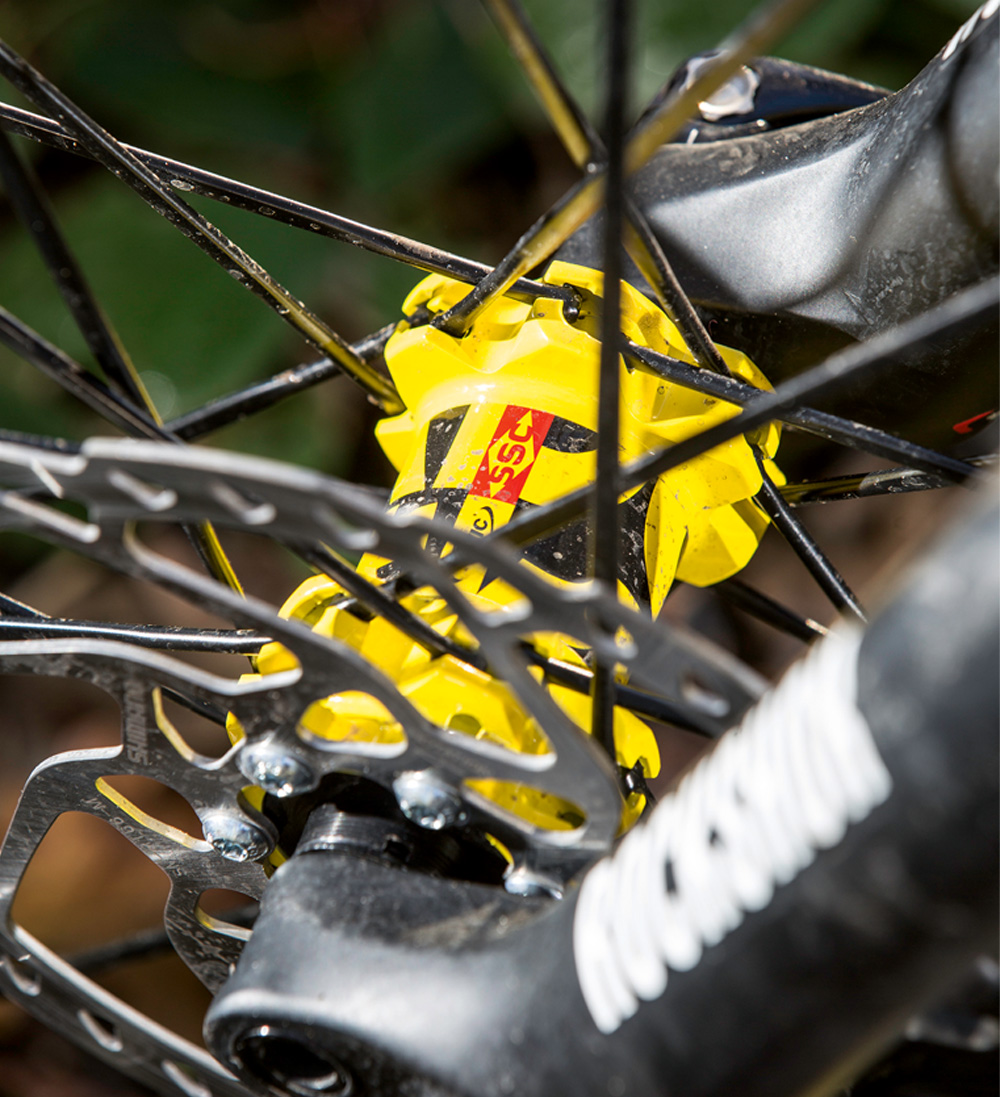Big changes this year at Vitus; we test the new 160mm Sommet Pro
Vitus Sommet Pro (2015) review
In a short space of time, Vitus has built a reputation for producing bikes with sorted geometry and great components at equally keen prices. It’s making huge strides from the old generic frame profiles too, with superior design and engineering evident on this new Sommet Pro enduro bike. But does the ride quality match the new sleek lines and high-end parts?
Before we answer that question, let’s take a closer look at the new frame. It sports the latest version of the ‘V-Link’ four-bar suspension, the twist being that the shock is now anchored to an extension of the chainstays, not the front triangle. As such, the lower shock mount moves forward slightly as the suspension compresses, reducing the progression through the 155mm of travel.
The frame construction is equally high-tech, with shapely hydroformed tubes, flush-fitting pivot hardware and an angular pierced seat tube that wraps around the Monarch Plus shock. An integrated rubber down tube protector and sculpted rocker-link plates underline the modern look, and with 142x12mm bolt-thru dropouts and ISCG 05 tabs (used to secure an E.Thirteen upper guide) the Sommet frame ticks all the boxes on a modern enduro bike’s check list.
Suspension
Even though the Sommet Pro frame delivers 5mm less travel than the 160mm Pike Solo Air fork, both ends of the bike offer a balanced suspension response. The rebound damping on the shock is at the firmer end of the tuning range, so it is best run wide open for maximum sensitivity and grip. To help initiate shock movement the Monarch Plus RC3 also comes with the new DebonAir sleeve with its larger negative air spring. Up front, we added an extra Bottomless Token to the Pike for more progression and support.
Components
Despite being the cheapest bike on test, the specification on the Sommet Pro is near flawless. If we were really nit-picking, we’d prefer a right-hand remote lever for the Reverb flipped upside-down on the left to sit under the XT brake lever. Also, the cheap-looking Nukeproof 760mm bar has too much back-sweep and it’s 20mm shy in terms of width.
Mavic’s Crossmax wheels are bombproof and lightning-fast, but the semi-slick, hard compound 2.2in Roam rear tyre is impractical for typically damp UK conditions.
Performance
Easy to set up and ride, the Sommet Pro is a fun, capable package. The riding position is balanced, and there was no problem letting it run on steep, technical descents straight away. On more undulating singletrack and trail-centre loops, we didn’t feel too over-biked either, thanks to its playful nature and good rolling speed.
The Sommet really digs in and grips when climbing steep trails, as chain tension causes the shock to extend under power, driving the rear tyre into the ground with each pedal stroke. This design trait is presumably to balance rider weight transfer acting on the suspension, and it makes the bike pedal tight.
It’s a double-edged sword though; the way the suspension is tuned means you don’t get as much of an active, floaty feel while descending, but with around 30 per cent sag the Sommet has enough grip and the design remains very active even under hard braking. Also, we had no issues with the shock bottoming out harshly.
At speed, there’s a comparable feeling of stability to most 150/160mm bikes, but the Vitus isn’t as solid as the stiffest bikes in this category. The rear-end flex is most noticeable when landing off-line in a rock garden or hitting massive, rutted berms. It’s not so bad as to put you off; it just doesn’t hold a line as well as the Giant. Also, when you push your weight through the pedals to preload the suspension — when springing out of a berm or pumping through compressions — the Sommet feels like it has less support deeper in the stroke.
>>> Click here to find out more about geometry with our handy guide
Verdict
With well-chosen, high-end parts at a great price, the new Vitus Sommet Pro is a sorted package. It’s lightweight, accelerates and maintains speed well and doesn’t exhibit any quirky or unusual traits, making it easy to ride from the get-go. The suspension performance is solid, albeit a notch or two below the sheer DH style capability and tracking of the Giant. It can’t match the stiffness of the Reign either, and would probably benefit from some beefier dropouts. It’s not an out-and-out Alpine monster then, but it’s efficient under power and neutral on the brakes, making it a good choice for serious enduro competition.





















